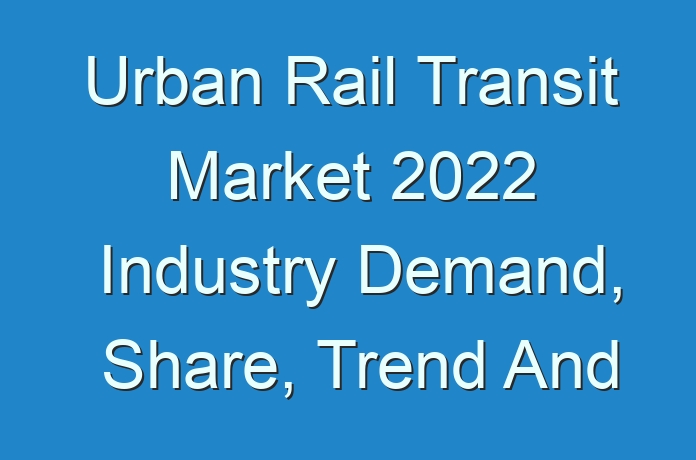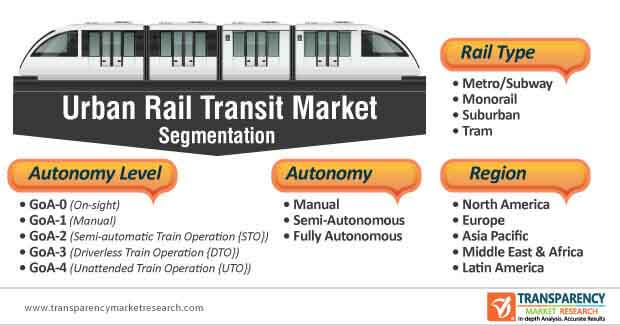
New Public Transport Planning Strategies amid Coronavirus Scare Drive Revenue
The Covid-19 crisis has greatly impacted the public transport ridership and service provision worldwide. This has led to a ripple effect in the urban rail transit market. As such, massive coronavirus lockdown relaxations in urban transportation are anticipated to fuel market growth and offset the losses in 2021 and 2022. New public transport planning strategies are setting production wheels in motion for automotive companies.
Major decline in service capacity of urban rail transit is predicted to affect business activities for automotive companies. Loan extensions, delay in debt payments, and strategic budget allocation for business activities are becoming increasingly commonplace in the urban rail transit market. The reopening of commercial, educational, and industrial sectors is kick-starting revenue flow in the urban rail transit market.
Request a sample to get extensive insights into the Urban Rail Transit Market https://www.transparencymarketresearch.com/sample/sample.php?flag=S&rep_id=51816

Light Rails to Serve as Integrated Public Transport Systems in Sydney
The light rail service is gaining visibility in Sydney. Advantages such as high passenger capacity per lane, per hour, and lowering of operating cost per passenger are catching the attention of city planners. However, high capital investment, inflexibility of route, and disruption in traffic during construction activities are shortcomings of light rail for Sydney. Hence, companies in the urban rail transit market are seeing light rails as an integrated public transportation system in Sydney instead of a separate money making venture.
Land use and transportation are being planned together to make light rails a success in Sydney. Such trends are bolstering growth of the Australia urban rail transit market.
ICT-enabled Applications Meet at Crossroads with Intelligent Urban Rail Transit Systems
Major technological feats such as driverless metros in Delhi, India, are bringing a significant change in revenue growth of the India urban rail transit market. In a densely populated country such as India, investors are tapping into incremental opportunities in automotive and public transport sectors of the country.
Intelligent urban rail transit systems are fueling the growth of the market. The growing demand for low energy consumption and high efficiency have set the manufacturing standards for automotive companies. ICT (Information and Communication Technologies)-enabled applications in modern rail transits are making transportation safer and convenient for passengers. However, it is challenging to maintain reliable train to ground wireless communication networks. Hence, stakeholders in the urban rail transit market are increasing their R&D expenditure to establish robust infrastructure in urban rail transit systems.
CCTV, Multimedia Advertising Facilities Offer Passenger Safety, Revenue Opportunities
Europe is dominant in the urban rail transit market. In order to support multi-line centralized operations, companies are offering cloud solutions to deliver openness and compatibility. Trends are shifting toward fully automated operations where Huawei— a Chinese multinational technology company, is providing its Urban Rail LET-M Solution and Urban Rail Agile IP Network Solution to clients to improve their operational efficiency.
IP (Internet Protocol)-based systems and applications are offering large transmission bandwidth for wireless communication. Companies in the urban rail transit market are accommodating CCTV and multimedia advertising facilities in systems to meet requirements of stakeholders in the value chain. The proliferation of enhanced machine type communication (eMTC) and the Internet of Things (IoT) are fueling market growth.
Consultation Firms Make Available Affordable, Durable Infrastructures
Consultation firms are an important part of the urban rail transit market. SYSTRA— an international engineering and consulting group in the mobility sector caters to new habits of passengers and offers safe solutions in urban rail transit systems. Attractive and durable infrastructures have become the need of the hour in order to prevent accidents and other unanticipated events. Automotive companies are addressing issues of acoustics and vibrations in systems to gain a competitive edge over other market leaders.
Companies in the urban rail transit market, government organizations, and consultation firms are partnering to enhance the station atmosphere and travelers’ experience. Optimization of costs via the availability of affordable infrastructure is emerging as a closing deal for government organizations.
Stuck in a neck-to-neck competition with other brands? Request a custom report on Urban Rail Transit Market https://www.transparencymarketresearch.com/sample/sample.php?flag=CR&rep_id=51816
Urban Rail Transit Market: Overview
- The global urban rail transit market is anticipated to expand at a CAGR of ~3% during the forecast period, owing to rise in government spending toward decongesting urban traffic. Major cities around the globe are deploying urban rail transit systems in urban areas for free movement of commuters, thereby avoiding traffic jams and making city life more easy and comfortable. Therefore, these factors are anticipated to drive the global urban rail transit transport during the forecast period.
- In 2017, metros carried ~53 billion passengers in 178 cities worldwide. Considering an average occupancy of 1.3 passengers per private car, metros remove the equivalent of 133 million cars from city streets every day.
- Most advantages can be further amplified with fully automated metros. Full automation is expected to become the mainstream design for new metro lines over the next five years.
Drivers of Urban Rail Transit Market
- Trends in the mobility sector are characterized by the need for solutions that make daily mobility simpler, faster, more flexible, reliable, and affordable. Cities and national economies face the challenge of reducing costs, space requirements, noise, and CO2 emissions of transportation. The pressure on urban rail transit providers and policymakers to meet these mobility and transportation needs is growing, as urban populations are expected to continuously rise and subsequently, drive inexpensive, environment-friendly, and rapid mode of urban rail transit systems.
Challenges for Urban Rail Transit Market
- The COVID-19 pandemic has negatively impacted the global economy, disrupted the global urban rail transit supply chains and created significant economic uncertainty where the urban rail transit manufacturing activities were significantly reduced or suspended for several weeks, starting in the last weeks of April and through the month of May. Operations globally gradually resumed with new safety measures in place; however, the cost of urban rail transit projects has been elevated due to the delay in project execution and urban rail transit raw material prices post COVID-19 scenario. These factors collectively hampered the urban rail transit market.





